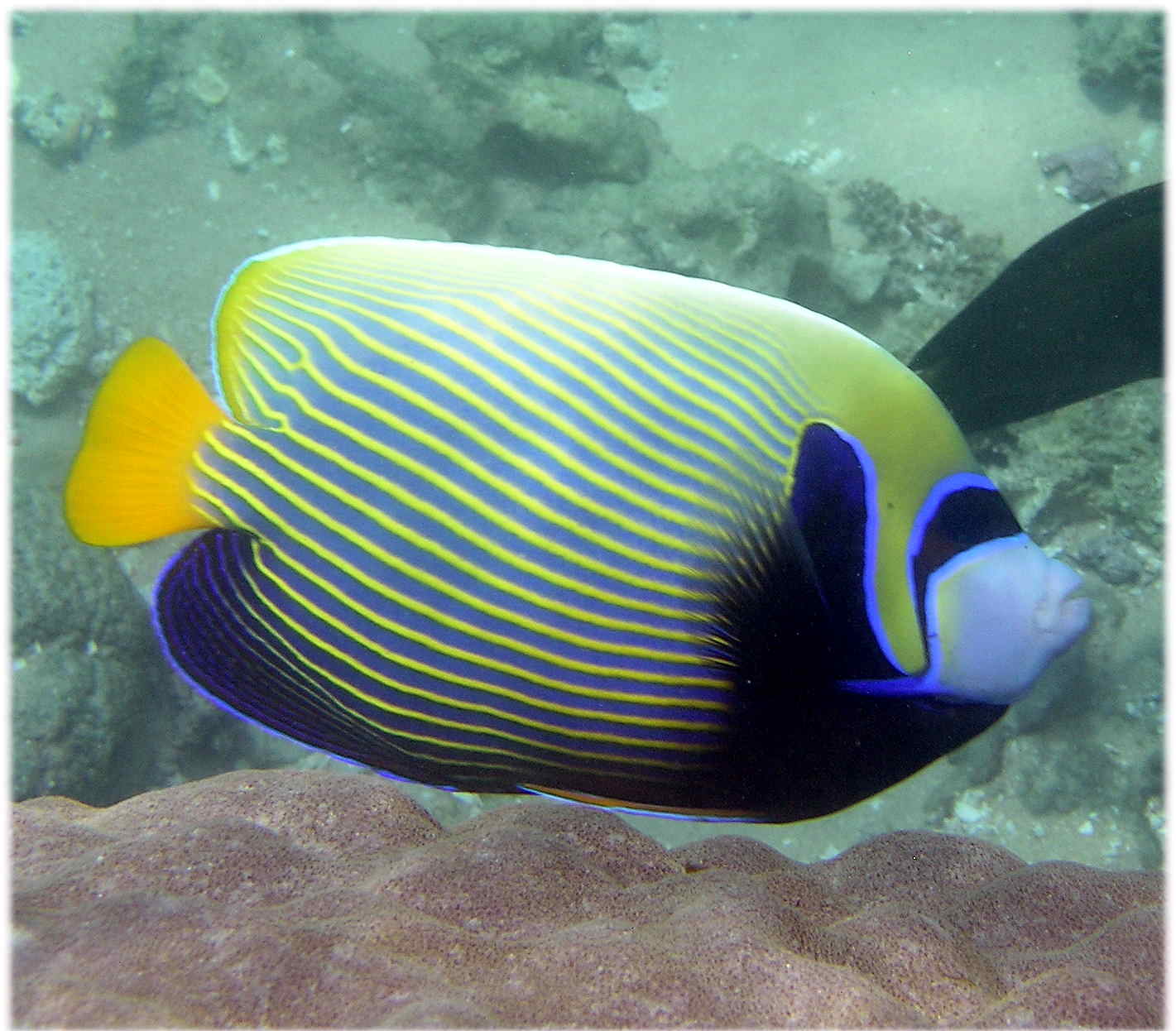The Emperor Angelfish (Pomacanthus imperator) is one of the most striking and beautiful species of saltwater angelfish, known for its vibrant colors and unique markings. It is a member of the Pomacanthidae family and is commonly found in the Indo-Pacific region, particularly around the coral reefs of the Indian Ocean and the Pacific Ocean.
Key Characteristics of the Emperor Angelfish:
-
Physical Appearance:
- Juvenile Emperor Angelfish: Juveniles are very distinct in appearance, with bright blue and yellow stripes running horizontally across their bodies. These stripes help them blend in with the colorful coral reefs where they live.
- Adult Emperor Angelfish: As they mature, the adult emperor angelfish undergoes a significant transformation. Their body becomes more blue with a dark navy blue band that runs from the head to the tail. They also develop a characteristic yellow patch around the face and along the dorsal fin. Adults have a bold and striking appearance, with golden yellow accents and a dark blue outline on their bodies, making them one of the most admired fish in the marine world.
-
Size:
- Emperor angelfish can grow up to around 40 cm (about 16 inches) in length, with females often being slightly larger than males. Their large, round body shape adds to their impressive size and majestic appearance.
-
Habitat and Distribution:
- The Emperor Angelfish is typically found in reef environments in the Indo-Pacific region, including the Red Sea, the Philippines, Indonesia, and parts of the Great Barrier Reef in Australia. They are commonly seen at depths of between 5 and 50 meters (16 to 164 feet) around coral reefs, where they seek shelter among the rocks and corals.
- These fish prefer clear, warm waters with abundant coral cover, which provides both food and protection.
-
Diet:
- Emperor angelfish are omnivorous, primarily feeding on sponges, coral polyps, and algae. They may also nibble on small invertebrates and organic matter found within the reef.
- Their specialized feeding habits allow them to thrive in their reef environments, where they use their strong jaws to break off and consume their prey.
-
Behavior and Social Structure:
- Emperor angelfish are known for being relatively territorial and solitary once they reach adulthood. However, juveniles may be seen in schools or groups as they grow.
- While they are generally peaceful, they may exhibit aggressive behavior if their territory is threatened or during mating season.
-
Reproduction:
- Spawning in emperor angelfish typically occurs in the early morning, often near the outer edges of coral reefs. They are pelagic spawners, meaning they release their eggs and sperm into the water column, where fertilization occurs.
- The larvae are carried by the ocean currents and undergo a long larval stage before settling on the reef, where they grow into juvenile fish.
-
Aquarium Trade:
- Due to their vibrant appearance, the emperor angelfish is a popular choice in the marine aquarium trade. However, they are challenging to care for due to their specific dietary and environmental needs, as they require large aquariums with well-established coral or rock structures to mimic their natural habitat.
- They are also sensitive to water quality and require consistent maintenance of temperature, salinity, and pH levels.
-
Conservation Status:
- While the emperor angelfish is not currently listed as endangered, coral reef ecosystems themselves are under threat due to climate change, overfishing, and coral bleaching. As a result, the species’ habitat is increasingly at risk, which could affect their populations in the future.
- Sustainable practices in marine conservation are essential to preserving the habitats of these magnificent fish.
Why is the Emperor Angelfish Special?
- Stunning Appearance: Its vibrant colors and distinct patterns make it one of the most visually striking fish in the marine world. It’s often a favorite among divers and underwater photographers.
- Cultural Significance: The emperor angelfish has become an iconic species in marine conservation, symbolizing the beauty of coral reefs and the importance of preserving these fragile ecosystems.
- Unique Behavior: Their feeding habits and territorial nature make them fascinating to observe in the wild, especially when they interact with other species in their habitat.
Fun Fact:
- Emperor Angelfish are named for their regal appearance, with the "emperor" suggesting their majestic presence in the underwater world, and their colorful, vibrant markings contributing to their royal-like image.
The Emperor Angelfish is a true gem of the coral reefs, combining stunning visual beauty with important ecological roles in their natural habitat. Whether in the wild or as part of a carefully maintained aquarium, they continue to captivate marine enthusiasts around the world.





